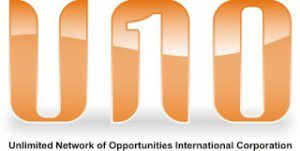 Aaron Spencer, now Uno Corporation chairman, enjoyed his first Chicago Original Deep Dish Pizza so much that he contacted Ike Sewell, founder of the original Pizzeria Uno restaurants, about expanding to other cities. He formed Uno Corporation in 1979, opening both company-owned and franchise units across the United States. By 1992 there were 100 Pizzeria Uno restaurants. Today the company has more than 200 restaurants in 32 states, the District of Columbia, Puerto Rico, South Korea, and the United Arab Emirates.
Aaron Spencer, now Uno Corporation chairman, enjoyed his first Chicago Original Deep Dish Pizza so much that he contacted Ike Sewell, founder of the original Pizzeria Uno restaurants, about expanding to other cities. He formed Uno Corporation in 1979, opening both company-owned and franchise units across the United States. By 1992 there were 100 Pizzeria Uno restaurants. Today the company has more than 200 restaurants in 32 states, the District of Columbia, Puerto Rico, South Korea, and the United Arab Emirates.
As the company grew, so did the restaurant concept and the menu. In 2003 the restaurant name changed from Pizzeria Uno to Uno Chicago Grill to better reflect its Chicago warehouse decor and casual dining menu. Appetizers, ribs, seafood, burgers, steaks, pasta dishes, and desserts joined its signature deep dish pizzas.
A high growth business such as Uno Corporation requires accurate, timely financial data to succeed. “How you manage your financial performance or operating per formance on a daily business is very important,” says Craig Miller, Uno’s chief financial officer. “The margins in the restaurant business average 3 to 4 cents on every dollar.” Therefore, accounting for every penny becomes critical to achieving profitability.
Uno Corporation’s financial data support decisions ranging from building a new restaurant and allocating funds to planning menus and developing marketing campaigns. Responsibility for data collection rests with the finance, accounting, and analysis people. They test that data against historical performance, evaluate how these decisions affected the company, and then project their impact on Uno’s future.
Managing costs is essential to the restaurant business. Uno’s restaurant managers keep a close watch on food, labor, repairs and maintenance, and other controllable costs. As Miller explains, “It’s a thin profitability, and it doesn’t take much to throw it out of whack. . . . If you get a big spike [in cost] in one of your big food items that is out of your control, you can wipe out your profitability pretty quickly. You can’t make a profit if you have to turn around and raise prices. It destroys the value equation against some of your competitors.”
Accounting for Uno’s widespread operations uses a sophisticated computer system to manage the cost structure. Each restaurant has computerized point-of-sale terminals that collect such data as sales figures, what items people buy, inventory replenishment statistics, and hours and wage rates of employees. With this data, Uno Corporation can compare each unit’s operating performance against its theoretical food control system. “If you are planning to run a 25 percent cost of sales and it goes to 27 percent, why is that?” says Miller.
In addition to short-term operations, Uno Corporation must manage its balance sheet to permit future growth. The average Uno restaurant requires $1.7 million in upfront capital, excluding land. Uno uses debt to finance its expansion program. The companygoal is to sustain its 20 to 25 percent annual growth in EPS and revenue. “We think we can do that by managing our balance sheet very well and being prudent about our investments,” says Miller.